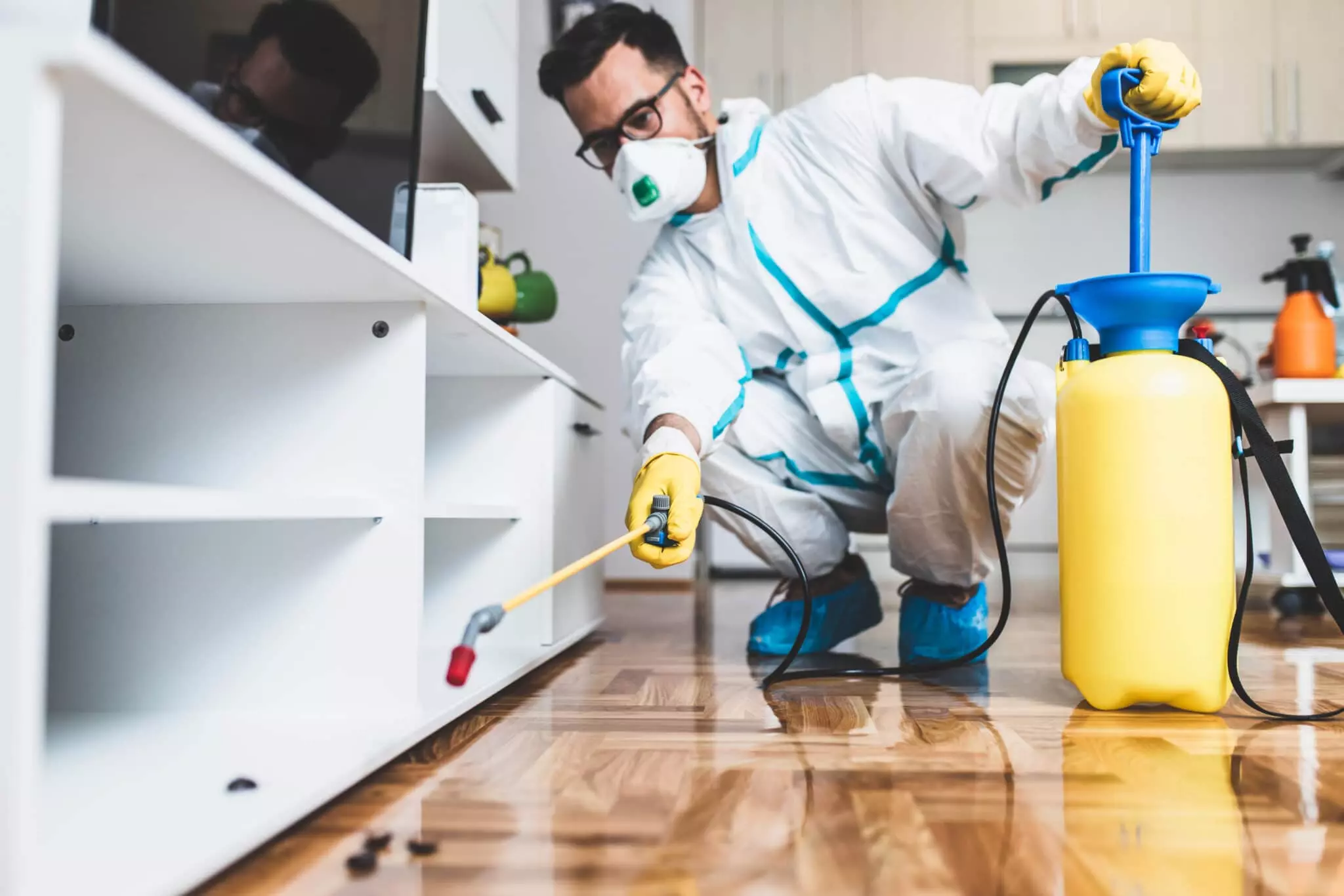A1 Charlotte Pest Control Companies - Your Neighborhood Pest Professionals
A1 Charlotte Pest Control Companies - Your Neighborhood Pest Professionals
Blog Article
Bed Pest Treatment Malfunction: Comparing Chemical Vs. Non-Chemical Solutions
In the world of insect control, specifically when dealing with the consistent problem of bed pests, the option between chemical and non-chemical treatment remedies can be a critical one. Both approaches provide distinctive benefits and drawbacks, affecting elements such as performance, safety considerations, and general cost. By taking a look at the nuanced information of each method, a clearer understanding of which course to pursue in dealing with a bed insect invasion can be achieved.
Effectiveness of Chemical Therapies
Chemical treatments for bed insect infestations have been extensively identified for their powerful and fast effectiveness in removing these insects. When thinking about the efficiency of chemical treatments, it is important to understand that they can provide a quick and extensive solution to a bed pest issue.
Additionally, chemical therapies have the advantage of offering recurring effects, implying that they can remain to remove bed pests even after the first application. This recurring activity is especially advantageous in combating any type of prospective re-infestations. In addition, the rapid activity of chemical treatments can bring alleviation to individuals facing extreme bed pest invasions, enabling them to reclaim control of their living areas promptly.
Safety And Security Issues With Chemical Solutions
One essential element that calls for mindful factor to consider when making use of chemical services for bed pest therapy is making certain the safety and security of occupants and the environment. Direct exposure to certain chemicals used in bed bug treatments can lead to respiratory issues, skin irritability, or various other damaging responses, specifically in people with pre-existing problems or sensitivities.
Furthermore, the environmental effect of chemical solutions is another significant factor to consider. Some pesticides used in bed pest therapies may be harmful to useful insects, wildlife, and ecosystems if they seep right into the dirt or water systems. It is important to make use of chemical treatments judiciously, following safety and security standards, and taking into consideration less hazardous choices to alleviate these risks and ensure the effective and secure monitoring of bed insect infestations.
Advantages of Non-Chemical Techniques
Taking into consideration the prospective safety worries and environmental effect related to chemical options for bed insect treatment, discovering non-chemical methods provides a promising choice with several unique advantages. Non-chemical methods provide a more secure choice for homes, particularly those with people, children, or family pets sensitive to extreme chemicals. These strategies eliminate the dangers of exposure to poisonous compounds, lowering the potential for damaging health and wellness impacts. Furthermore, non-chemical treatments are eco-friendly, as they do not contribute to air or water pollution, making them a sustainable option for parasite control.
In addition, non-chemical options can be effective in targeting bed bugs, including hard-to-reach about his locations where chemical treatments might not penetrate - A1 bed bug exterminator charlotte. Techniques such as warm treatment, vacuuming, vapor cleaning, and mattress coverings supply detailed elimination without the use of damaging chemicals.
Limitations of Non-Chemical Treatments

In addition, non-chemical therapies frequently need numerous applications to attain effective removal. This can be lengthy and might not always ensure full elimination of all bed bugs and their eggs, especially in hidden or hard-to-reach areas.
Furthermore, the success of non-chemical therapies heavily relies upon proper application and thoroughness, which can be testing for people without specialist competence. Insufficient application of non-chemical methods may result in insufficient eradication, causing relentless problems and the demand for added therapies.
Therefore, while non-chemical treatments have their advantages, it is necessary to recognize these constraints and consider them when establishing one of the most efficient strategy for taking care of bed pest problems.
Price Contrast: Chemical Vs. Non-Chemical Options
Offered the constraints related to non-chemical therapies, an essential facet to review in the context of bed bug management is the price contrast in between chemical and non-chemical choices. Chemical treatments generally include the application of pesticides visit this website by experts, which can vary from $250 to $900 per space, depending upon the severity of the invasion and the dimension of the area to be treated. On the other hand, non-chemical treatments like warm treatment or vapor can be a lot more costly, with prices ranging from $1,000 to $6,000 for an entire home. While the preliminary cost of chemical treatments might seem reduced, numerous treatments may be needed to totally remove the invasion, potentially raising the general cost. On the other hand, non-chemical options may give a more green and sustainable solution, although they can be cost-prohibitive for some individuals. Inevitably, when taking into consideration the expense of bed bug therapy choices, it is essential to weigh the ahead of time costs versus the efficiency and lasting sustainability of the selected method.
Verdict

Taking into consideration the prospective safety concerns and ecological effect associated with chemical remedies for bed insect treatment, checking out non-chemical approaches offers an appealing alternative with a number of distinct advantages.Provided the limitations connected with non-chemical treatments, an essential element to examine in the context of bed insect management is the cost contrast between chemical and non-chemical check this alternatives. In contrast, non-chemical treatments like warm therapy or vapor can be extra expensive, with prices ranging from $1,000 to $6,000 for a whole home. While the initial price of chemical treatments might appear reduced, multiple treatments may be needed to fully get rid of the infestation, potentially raising the overall cost.In final thought, when contrasting chemical and non-chemical bed bug therapy alternatives, it is vital to consider efficiency, safety and security, benefits, restrictions, and price.
Report this page